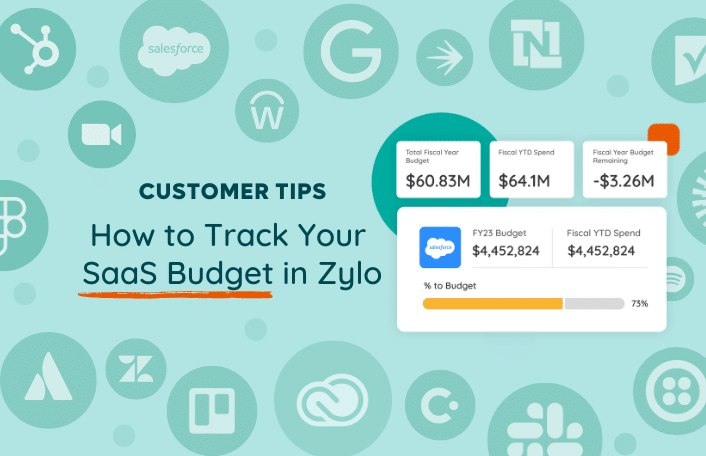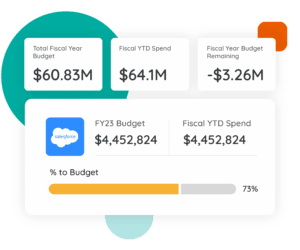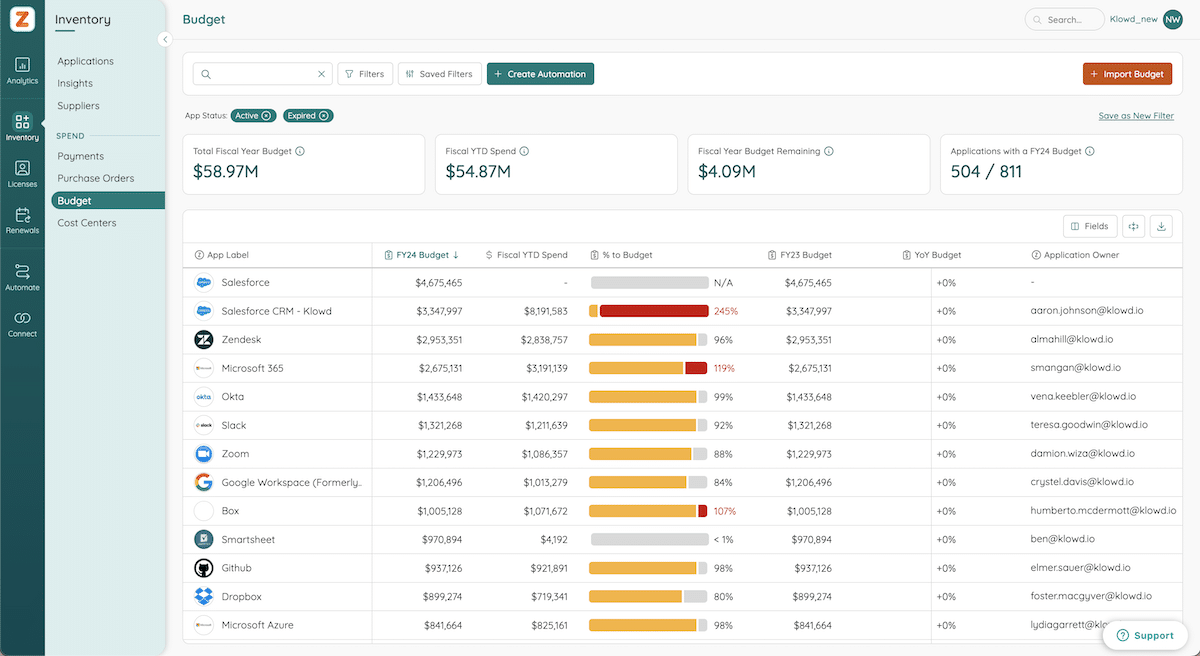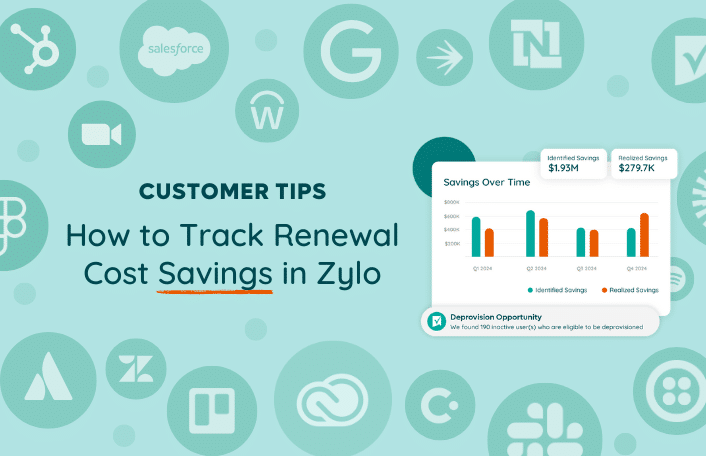
Zylo Tips: How to Calculate Cost Per User and Showbacks
Table of Contents ToggleWhy Calculating Cost Per User Is DifficultDefining Cost...
Back
Back
Search for Keywords...
Blog

Table of Contents
Imagine you’re in the midst of budgeting season. You’ve used data in Zylo to validate your SaaS budget and identified that the amount you plan to spend is within the realm of reality. Once your budget is set, Zylo’s App Budgets becomes your sidekick to monitor how that budget is pacing throughout the year.
 App Budgets enables you to track actual spending alongside your budgeted amount for each application in your inventory. Zylo also identifies budget overruns and apps at risk for overrun so you can remediate that with license management or other cost-reduction measures.
App Budgets enables you to track actual spending alongside your budgeted amount for each application in your inventory. Zylo also identifies budget overruns and apps at risk for overrun so you can remediate that with license management or other cost-reduction measures.
Spend discovery really comes to life in App Budgets. Zylo discovers every single transaction for every application, and categorizes and classifies those apps and transactions. You know exactly down to the dollar and cent how much you’re spending for a tool, and you can compare that to your budgeted amount.
So how do you track your budget in Zylo? To start, navigate to Budgets, which is found in the Inventory tab. When you first jump in, you’re looking at the budgets for all of the applications inside your stack.
In the example below, the list of applications is filtered to IT-owned applications. At a glance, you can quickly see how each application is performing. By showing the budget for the current and previous year (second and third columns), you can see how it has changed year over year. Then, in the fourth column, you can see your fiscal-year-to-date spending as it’s pacing to that year.

Analyzing this data, you can see a couple of line items at the top where PagerDuty, Wrike, and a few other tools are running over what was budgeted. This is not a great place to be.

Some of the first people you should talk to are the application owner or the business owner. For instance, you may want to talk to the primary cost center that’s driving that spending so you can investigate what’s going on with this tool.
Zylo has pre-built insights to help you dig into the different apps that you should be paying attention to. These insights are helpful to see where your spend is exceeding the most so you can address those tools and put plans in place. Here are a few examples:

To avoid budget overruns, there are a few tactics you can employ.
The first is to optimize your renewal life cycle, which we talked about in another tips video. Upcoming renewals is a great place to address your needs and reduce costs to help relieve budget constraints.
Second, make sure you’re managing the licenses for those applications. If you can re-harvest those licenses, that may help you avoid a true up or the need to buy more seats.
If your software budgets are flat or down this year, don’t write off the ability to add innovative software solutions throughout the year. Actioning on savings opportunities can free up spend that you can then use to reinvest into your business or strategic projects. And monitoring your budgets is one of those ways to pinpoint where you can free up dollars. To learn more, check out the Knowledge Base or reach out to your CSM.
ABOUT THE AUTHOR

Thom McCorkle
As Zylo's Director of Product Marketing, Thom is responsible for leading Zylo's product marketing strategy and execution with a passion for aligning customer needs and Zylo's value into everything we build and launch. He brings 7+ years of experience working with Zylo's customers and prospects with various roles from leading Customer Success to enablement and sales/solution strategy.

Table of Contents ToggleWhy Calculating Cost Per User Is DifficultDefining Cost...

Table of Contents Toggle3 Pre-Built Dashboards in ZyloAnalytics DashboardZylo Value Framework...

Table of Contents Toggle120 Days Before Renewal: Proactively Review Terms90 Days...

Table of Contents ToggleWhat Is Savings Center?Defining Common Terms in Savings...
| Cookie | Duration | Description |
|---|---|---|
| cookielawinfo-checkbox-analytics | 11 months | This cookie is set by GDPR Cookie Consent plugin. The cookie is used to store the user consent for the cookies in the category "Analytics". |
| cookielawinfo-checkbox-functional | 11 months | The cookie is set by GDPR cookie consent to record the user consent for the cookies in the category "Functional". |
| cookielawinfo-checkbox-necessary | 11 months | This cookie is set by GDPR Cookie Consent plugin. The cookies is used to store the user consent for the cookies in the category "Necessary". |
| cookielawinfo-checkbox-others | 11 months | This cookie is set by GDPR Cookie Consent plugin. The cookie is used to store the user consent for the cookies in the category "Other. |
| cookielawinfo-checkbox-performance | 11 months | This cookie is set by GDPR Cookie Consent plugin. The cookie is used to store the user consent for the cookies in the category "Performance". |
| viewed_cookie_policy | 11 months | The cookie is set by the GDPR Cookie Consent plugin and is used to store whether or not user has consented to the use of cookies. It does not store any personal data. |
